 |
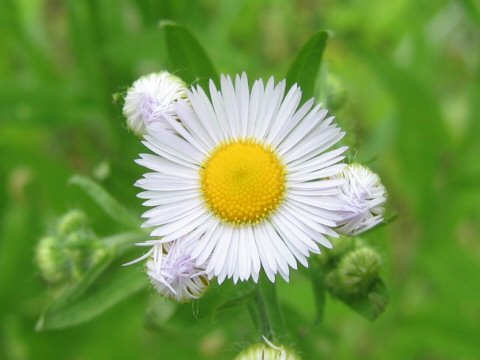

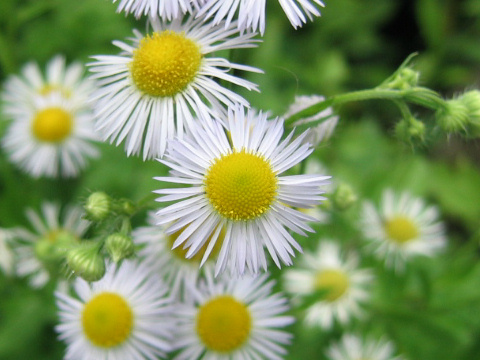

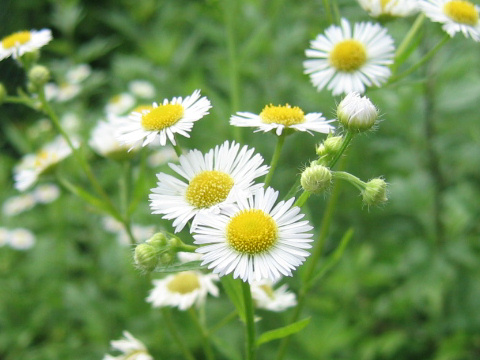

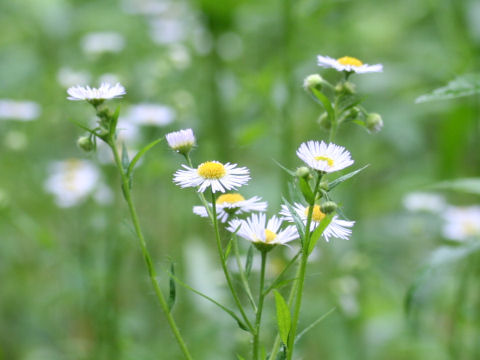

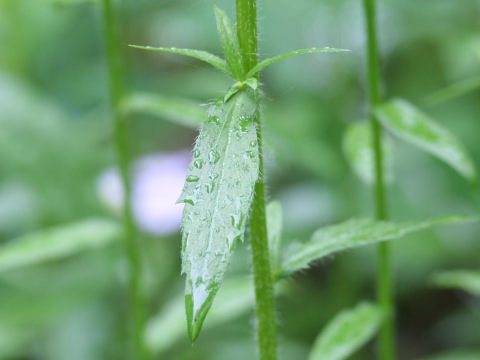

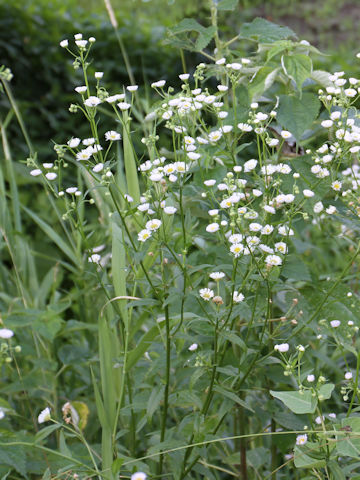

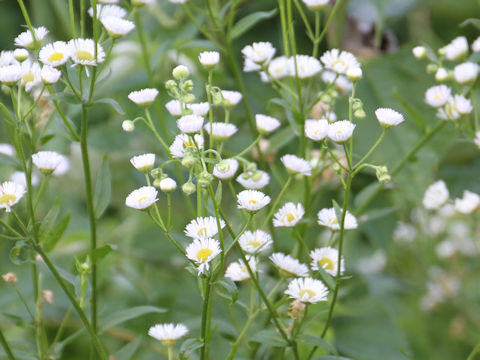

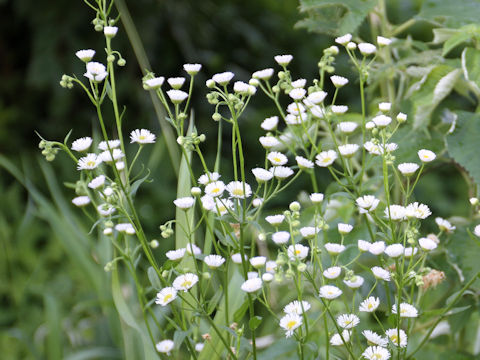

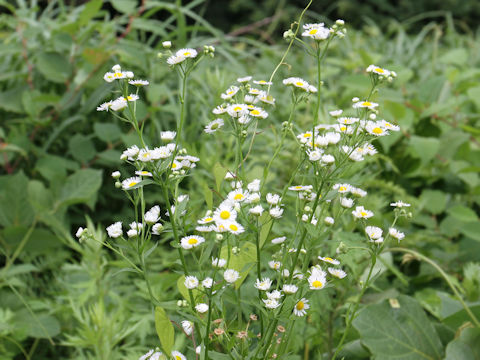

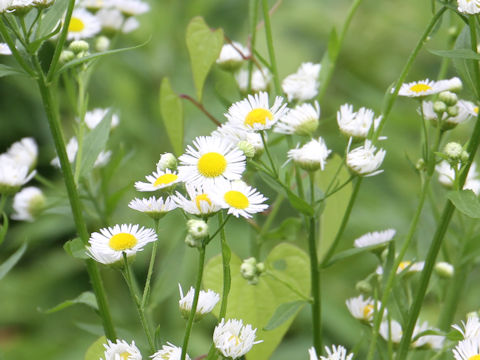

|

|
北アメリカが原産です。わが国へは明治時代のはじめに渡来しました。現在では各地に帰化しています。平地から亜高山帯にまで生え、高さは30~120センチになります。下部の葉は卵形で長い葉柄があり、縁には粗い鋸歯があります。上部の葉は披針形です。6月から10月ごろ、白い頭花を咲かせます。舌状花は「はるじおん(春紫苑)」に比べて白く、数も少なめです。つぼみはわずかにうなだれます。若い芽は少し苦みがありますが、食べることができます。
|

|
キク科ヒメジョオン属の一年草で、学名は Stenactis annuus。英名は Annual fleabane。
|

|
The Annual fleabane (Stenactis annuus) belongs to Asteraceae (the Aster family). It is an annual herb that is native to North America. It was introduced into Japan at the beginning of the Meiji period (1868-1912). It is naturalized in various places now. It grows from flatlands to the subalpine zone, and its height is 30 to 120 cm. The lower leaves are ovate, with long petioles rough toothed edges. The upper leaves are lanceolate. White flowers bloom from June to October. The ray-flowers are whiter and fewer in number than "Philadelphia fleabane (Erigeron philadelphicus)". The buds will slightly swell. Young shoots are a bit bitter but can be eaten.
|

|
[上] 大阪府四條畷市逢阪「清滝峠」にて、2004年05月29日撮影。
[中1・中2] 長野県佐久穂町大日向にて、2005年07月10日撮影。
[中3・中4] 長野県大町市平「篭川渓谷」にて、2006年07月09日撮影。
[中5~中7] 青森県弘前市葛原にて、2018年07月15日撮影。
[中8・下] 山形県小国町小玉川にて、2018年07月06日撮影。
|











